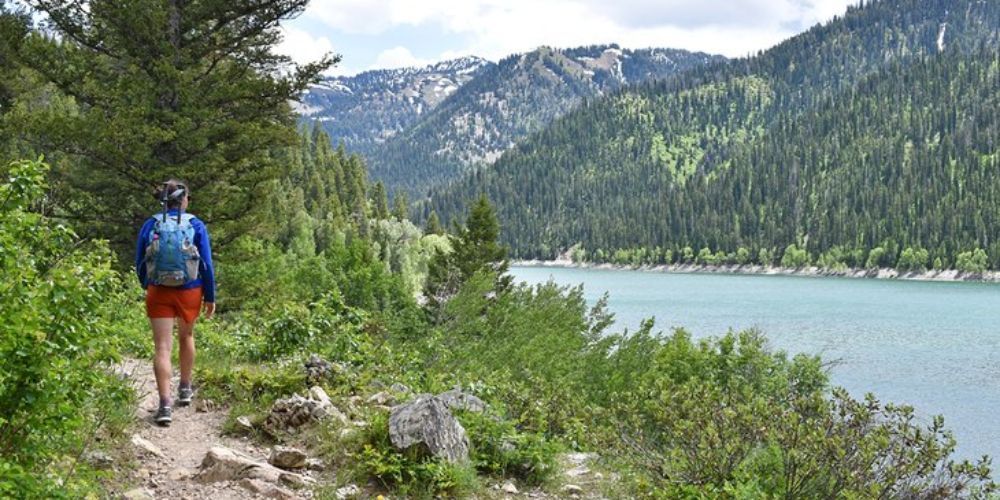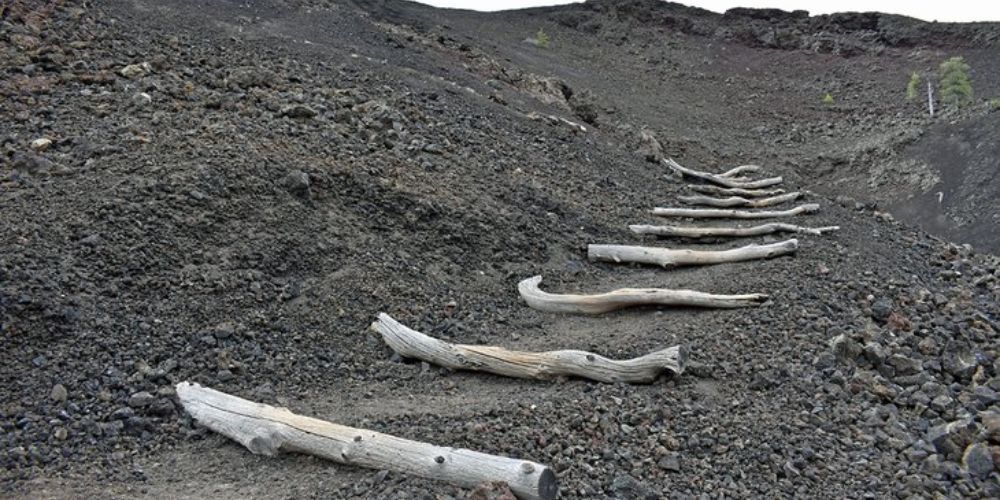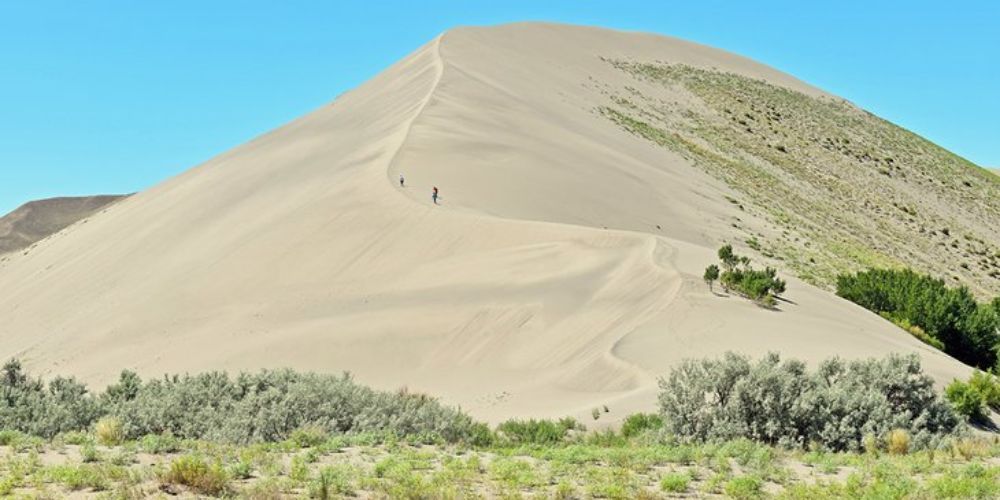Discover the Best Hiking Trails in Idaho: A Scenic Outdoor Adventure
Idaho might not be the first place you think of for hiking, but it harbors some of the most enchanting and varied trails in the country. Whether you're crossing pristine alpine lakes or walking through fields of wildflowers swaying gently under a summer breeze, Idaho's landscapes offer a remarkable canvas for nature lovers.
To help you uncover these hidden gems, we've meticulously reviewed each trail’s difficulty, breathtaking views, and seasonal considerations. Imagine an early morning hike where the sun captures snow-capped peaks or discovering an untouched waterfall framed by autumn colors; these experiences offer both challenge and serenity. Let's explore some of the best hikes Idaho has to offer.
The best hiking trails in Idaho include Sawtooth Lake Trail, Hell's Canyon National Recreation Area, and Craters of the Moon National Monument. Each offers stunning landscapes and unique experiences for hikers of all skill levels.

Top Scenic Trails in Idaho
Let's start with the Sawtooth Lake Trail. This remarkable 10-mile round-trip hike nestled in the Sawtooth Wilderness unveils an awe-inspiring display of alpine beauty. As you traverse through rugged peaks, be prepared to be captivated by the pristine scenery and the glistening waters of Sawtooth Lake. The trail rewards hikers with breathtaking vistas, making every step worth the effort. The serene and untouched wilderness offers a sense of tranquility that is unparalleled.
Moving on to the Alice Lake Trail, this moderately challenging 12-mile loop near Stanley is a gem waiting to be discovered. It meanders through alpine lakes, lush meadows, and vibrant wildflowers, especially during late summer. The journey brings a sense of serenity, surrounded by nature's beauty. Each twist and turn of the trail leads to picturesque settings that are reminiscent of a fairytale landscape. The Alice Lake Trail offers an invigorating experience for hikers seeking tranquility amidst stunning natural surroundings.
Table Rock Trail
Conveniently accessible from Boise, the Table Rock Trail presents an opportunity to witness panoramic views of the city and its surrounding foothills. This 3.7-mile trail is an excellent choice for those looking to immerse themselves in nature without venturing too far from urban comforts. Whether it's a sunrise or sunset hike, the mesmerizing vistas are bound to leave a lasting impression on every hiker. The Table Rock Trail serves as a picturesque escape that instills a profound sense of connection with the natural world.
Perrine Coulee Falls Trail
Lastly, we have the Perrine Coulee Falls Trail, a short 1.5-mile hike in Twin Falls leading to a magnificent waterfall. This enchanting trail culminates in the awe-inspiring spectacle of Perrine Coulee Falls, offering a refreshing experience and serving as an ideal spot for photography enthusiasts. The harmony of rushing water and untouched natural beauty creates an atmosphere that rejuvenates both body and spirit, making it a must-visit destination for hikers and nature lovers alike.
Each of these trails embodies Idaho's striking natural landscapes and provides an exceptional outdoor experience, inviting adventurers to unwind amidst captivating scenery and explore the wonders of the Gem State's diverse terrain.
Best Season for Idaho Hiking
Planning a hiking trip goes beyond selecting a trail; it also entails careful consideration of the best time to visit. In Idaho, the optimal months for hiking generally span from late spring to early fall—specifically from May to October. During these months, trail accessibility is at its peak, and the weather conditions are generally favorable for outdoor activities.
However, it's important to be mindful of high-altitude considerations. At higher elevations, snow may linger until June or July, leading to tricky trail conditions due to snowmelt. It's crucial to plan your hiking trips accordingly and stay updated on trail conditions before venturing out, especially if you're eyeing the high-elevation routes.
High Altitude Considerations
At higher elevations, snow may linger until June or July, so plan accordingly for snowmelt and trail conditions.
On the other hand, autumn can be an equally enchanting time for hiking in Idaho. The months of September and October offer cooler temperatures and the added bonus of stunning fall foliage.
Fall Hiking
Autumn months (September and October) are ideal for hiking with cooler temperatures and the added bonus of stunning fall foliage.
While different seasons offer unique experiences for hikers in Idaho, it's essential to consider elevation and seasonal characteristics when planning your hiking adventures.
As you lace up your boots and prepare for your next trek through the picturesque landscapes of Idaho, it's equally crucial to equip yourself with the right gear. Let's dive into the essential equipment needed for a fulfilling hiking experience in this beautiful state.
Essential Gear for Idaho Hikes
When setting out into Idaho's picturesque landscapes, having the right gear can make all the difference. Here are some crucial items you'll want to have with you when hitting the trails.
Footwear
Your choice of footwear can literally make or break your hiking experience. Investing in high-quality hiking boots is key, as they provide the necessary ankle support and traction to navigate varied terrains safely. In Idaho, you might encounter anything from rocky paths to muddy trails, so having sturdy boots will give you stability and help prevent slips and falls. Look for boots specifically designed for rugged terrain, with durable soles that offer good grip. Additionally, consider waterproofing or water-resistant materials to keep your feet dry in case of unexpected rain or stream crossings.
Indeed, a comfortable and supportive pair of hiking boots can mean the difference between an enjoyable hike and a painful struggle. It is crucial to try on different pairs beforehand, ensuring they fit well and are broken in before heading out on a long trek.
Hydration
Idaho's dry climate can quickly lead to dehydration, particularly on longer trails. It's essential to bring plenty of water, either in a hydration pack or multiple water bottles, depending on trail length and personal needs. Consider the duration of your hike and plan accordingly to stay adequately hydrated throughout your excursion. Dehydration can cause fatigue, dizziness, and even heat-related illnesses, which can detract from the enjoyment of your hike.
A good rule of thumb is to drink water at regular intervals, even if you don't feel particularly thirsty. Remember, it's easy to underestimate how much water you'll need during physical activity, especially in arid environments like Idaho's hiking trails.
Navigation Tools
Even in this age of technology, it's wise to carry backup navigation tools such as a GPS device , map, and compass. Many of Idaho's trails are located in remote areas with limited or no cell service, making electronic navigation tools unreliable. By bringing traditional navigational aids, you'll be better prepared to find your way in case of unexpected circumstances or technology failure.
Furthermore, knowing how to use these traditional tools can add an extra layer of safety and preparedness to your hike. Familiarize yourself with reading topographic maps and using a compass before embarking on more challenging routes.
Equipping yourself with these indispensable items ensures that you're well-prepared for the unique challenges that Idaho's scenic hiking trails present. Each piece of gear plays a critical role in keeping you safe, comfortable, and able to fully appreciate the breathtaking natural beauty around you.
Safety Tips for Idaho Trails
As you lace up your sturdy boots and prepare to set out on an exciting adventure through Idaho's breathtaking wilderness, it's crucial to prioritize safety. The natural beauty of these trails comes with its share of potential hazards, such as encounters with wildlife and unpredictable weather conditions. Here are some vital safety tips to ensure a secure and enjoyable hiking experience.
Wildlife Awareness
Idaho boasts a diverse range of wildlife, including bears and mountain lions. While these creatures are an integral part of the ecosystem, it's important to take precautions to minimize the risk of unexpected encounters. When hiking, make noise by talking or clapping your hands at regular intervals. This alerts animals to your presence, reducing the likelihood of startling them. Carrying bear spray provides an effective deterrent in the rare event of a close encounter with a bear or other wildlife. It's essential to learn how to use bear spray correctly before setting out on your hike.
The presence of large predators in the region underscores the necessity of being vigilant and prepared while exploring the trails. Be aware of your surroundings, especially in areas known for high wildlife activity. Keep an eye out for signs such as fresh tracks or scat, which can indicate recent wildlife presence nearby. By proactively practicing wildlife awareness and understanding habits and habitats, hikers can coexist responsibly in these shared spaces.
Weather Preparedness
Idaho's varied landscape encompasses rugged mountains and lush forests, where weather conditions can change rapidly and unexpectedly. Before embarking on your hike, thoroughly check the weather forecast for the region you plan to visit. Pack essential gear such as extra layers of clothing, waterproof jackets, hats, gloves, and emergency blankets to prepare for sudden weather shifts or unexpected temperature drops. Bringing along adequate water and high-energy snacks is also crucial in case your hike extends longer than anticipated due to unforeseen weather-related delays.
Be attentive to cloud formations and wind patterns during your hike. If you notice darkening skies or hear distant thunder, seek shelter immediately—avoid open areas, tall trees, or exposed ridges where lightning strikes would pose a significant danger.
Trail Etiquette
Respecting the natural environment and fellow hikers is paramount when traversing Idaho's picturesque trails. "Leave No Trace" principles serve as guiding ethics for preserving the unspoiled beauty of these outdoor spaces. Always carry out any waste you produce, tread lightly to minimize soil erosion, and keep noise levels at a considerate minimum.
Imagine hiking along a serene trail bordered by vibrant wildflowers and expansive vistas when suddenly encountering excessive noise from another group of hikers nearby. Not only does this disrupt the tranquil ambiance that many seek in nature but also disturbs local wildlife and fauna habitat integrity.
By embodying trail courtesy and fostering environmental stewardship, hikers contribute to sustaining these remarkable natural habitats for future generations to enjoy.
With these safety tips in mind, you'll be well-prepared to embark on your Idaho hiking adventure while safeguarding yourself, respecting nature, and preserving the pristine wilderness for others to relish in the years to come.

Iconic National Parks in Idaho
Idaho houses some of the most breathtaking and diverse landscapes in the United States. The state's national parks deliver a plethora of outdoor experiences, from exceptional geological formations to a variety of wildlife and historical significance. Let's closely examine three iconic national parks in Idaho that are certain to captivate any outdoor enthusiast.
Craters of the Moon National Monument and Preserve
This distinctive landscape was shaped by ancient volcanic activity, resulting in an otherworldly terrain of lava fields and caves. The monument offers loop trails that wind through the rugged terrain, providing an immersive experience for casual hikers and geology enthusiasts alike.
Walking through these lava fields will make you feel like you're exploring another planet. The preserved landscape is a living testament to the powerful forces that shaped the Earth's surface. As you traverse the trails, you'll encounter intriguing geological features and perhaps even catch glimpses of unique plant life that has adapted to this harsh environment.
Yellowstone National Park
While most of Yellowstone lies in Wyoming, parts of this iconic national park extend into Idaho. These lesser-known areas offer secluded hiking experiences away from the bustling crowds, allowing visitors to appreciate the park's distinctive geothermal features and abundant wildlife.
Exploring these remote sections of Yellowstone in Idaho presents unparalleled opportunities to witness natural wonders such as geysers, hot springs, and bubbling mud pots. The serenity of these areas provides a stark contrast to the busier regions of the park, allowing for a deeper connection with nature.
City of Rocks National Reserve
For those with a penchant for adventure, City of Rocks National Reserve is an absolute must-visit destination. This reserve boasts captivating granite spires that attract rock climbers from around the world, offering unparalleled opportunities for both climbing and hiking.
As you hike through this rugged terrain, you'll be surrounded by awe-inspiring rock formations that have been sculpted over millions of years. Additionally, the reserve is home to diverse wildlife and historical emigrant trails, enriching the overall experience with a sense of natural heritage.
Each of these national parks in Idaho holds its own awe-inspiring allure, offering an abundance of natural wonders waiting to be discovered by adventurous souls from all walks of life.
After immersing ourselves in the marvels of Idaho's iconic national parks, it's time to uncover the hidden gems that lie off the well-trodden paths—the secret trails off the beaten path.

Secret Trails Off the Beaten Path
Hidden amidst the breathtaking landscapes of Idaho are some lesser-known hiking gems, providing serenity and seclusion for those who seek it. These trails, often less trafficked and somewhat more challenging, lead to stunning natural wonders, offering an escape from the bustling tourist spots and enabling you to fully immerse yourself in nature's tranquility.
One such trail is the Johnson Bar Loop near Orofino, where experienced hikers can find solace in nature's embrace. With picturesque river views and silent forests, this lightly trafficked trail is perfect for those seeking a peaceful, solitary experience away from the well-trodden paths of popular national parks.
If you're craving even more seclusion, nestled within the Selway-Bitterroot Wilderness lies the Fishpole Lake Trail, a true hidden gem. This 5.5-mile trail leads to a secluded alpine lake teeming with trout, offering a peaceful haven for a private hike amidst untouched natural beauty.
For a moderately challenging trek, consider the Harrison Lake Trail, tucked away in the rugged landscapes of the Salmon-Challis National Forest. Spanning 6.2 miles, this trail rewards hikers with pristine lake views and unparalleled serenity—a true sanctuary for anyone seeking a fulfilling outdoor adventure off the beaten path.
These secret trails provide an opportunity for hikers to carve their own path and discover hidden treasures away from the crowds and noise of more frequented areas. If you're yearning for solitude and unspoiled natural beauty, these off-the-beaten-path trails are calling your name.Embrace the allure of Idaho's hidden trails, where boundless wilderness and untamed beauty await your discovery.
Author: William Flaiz
